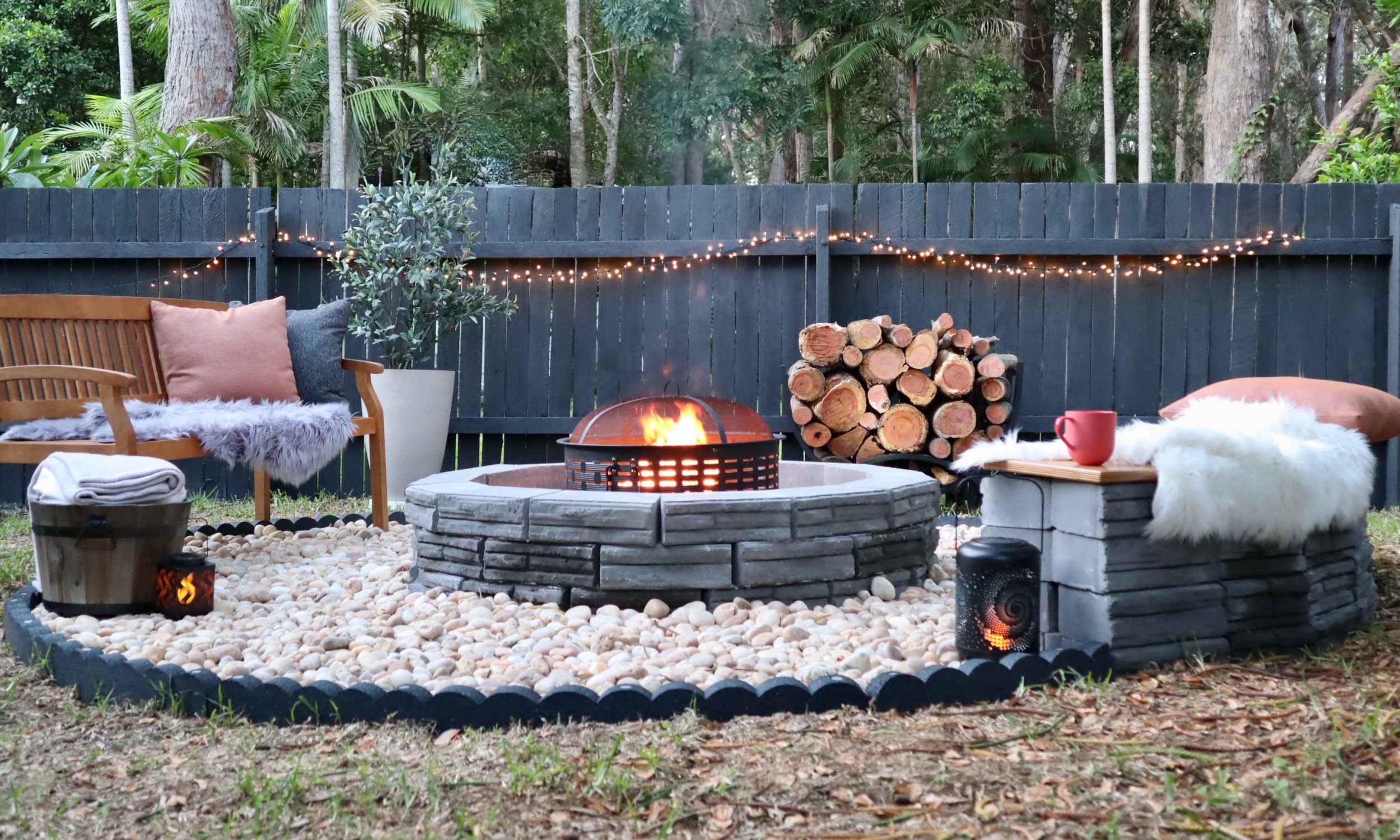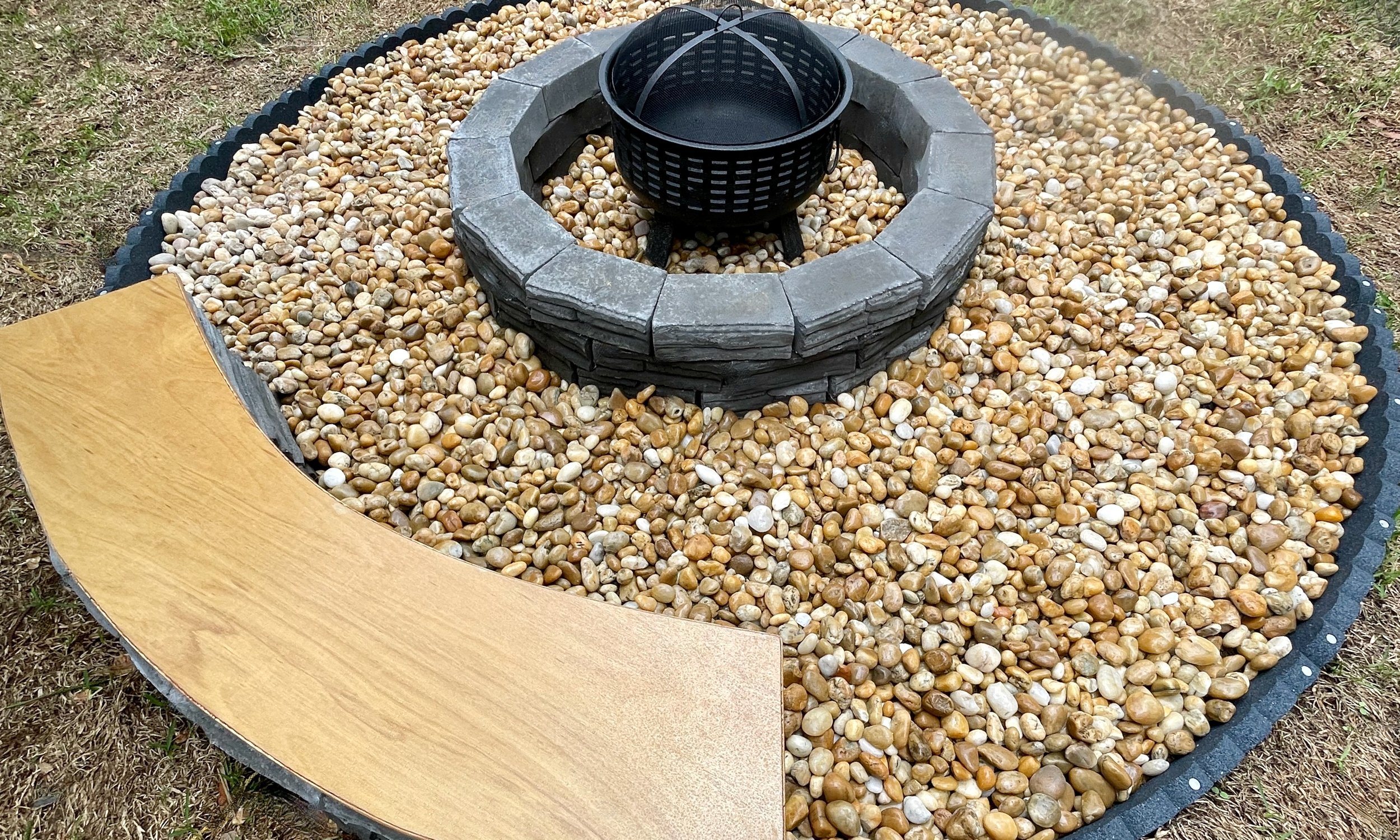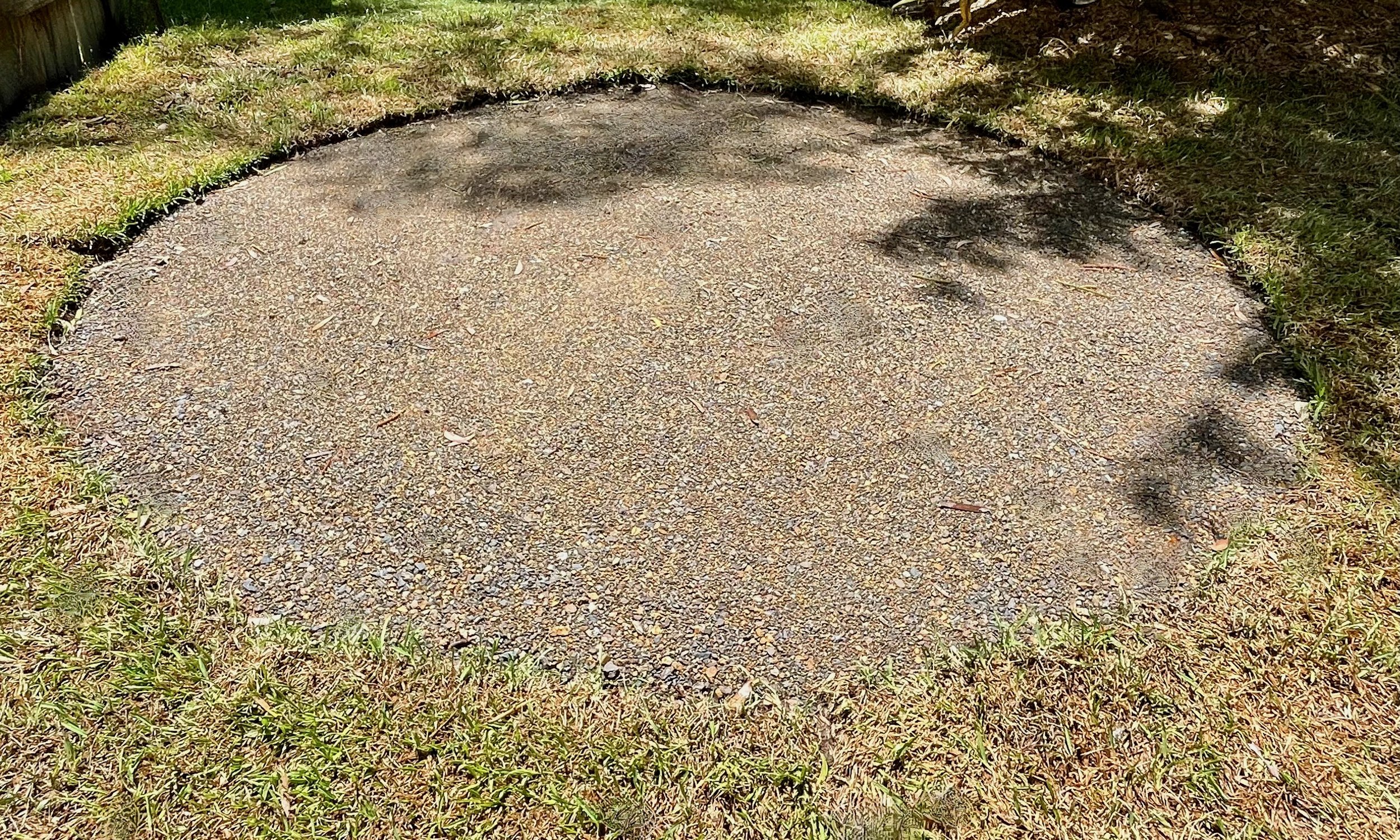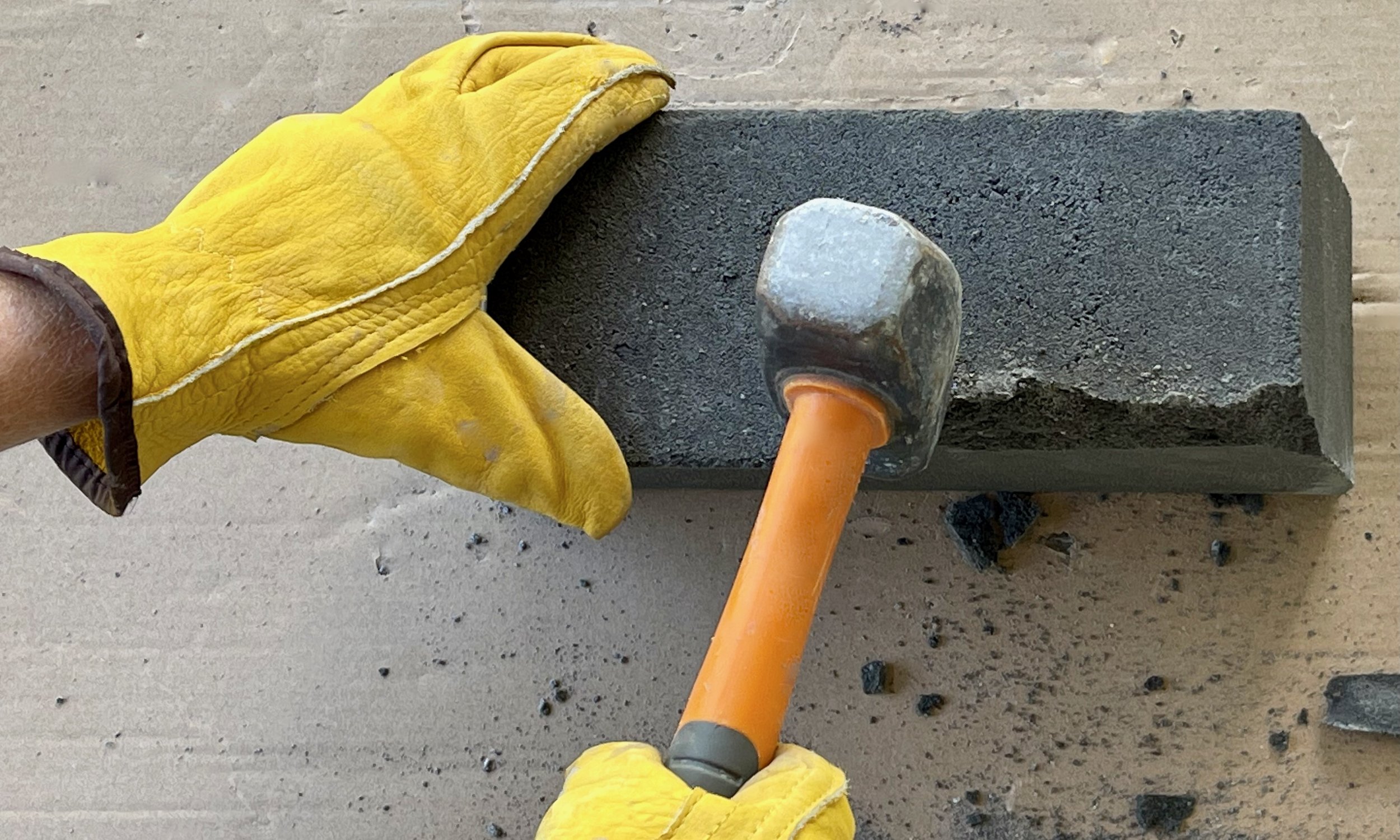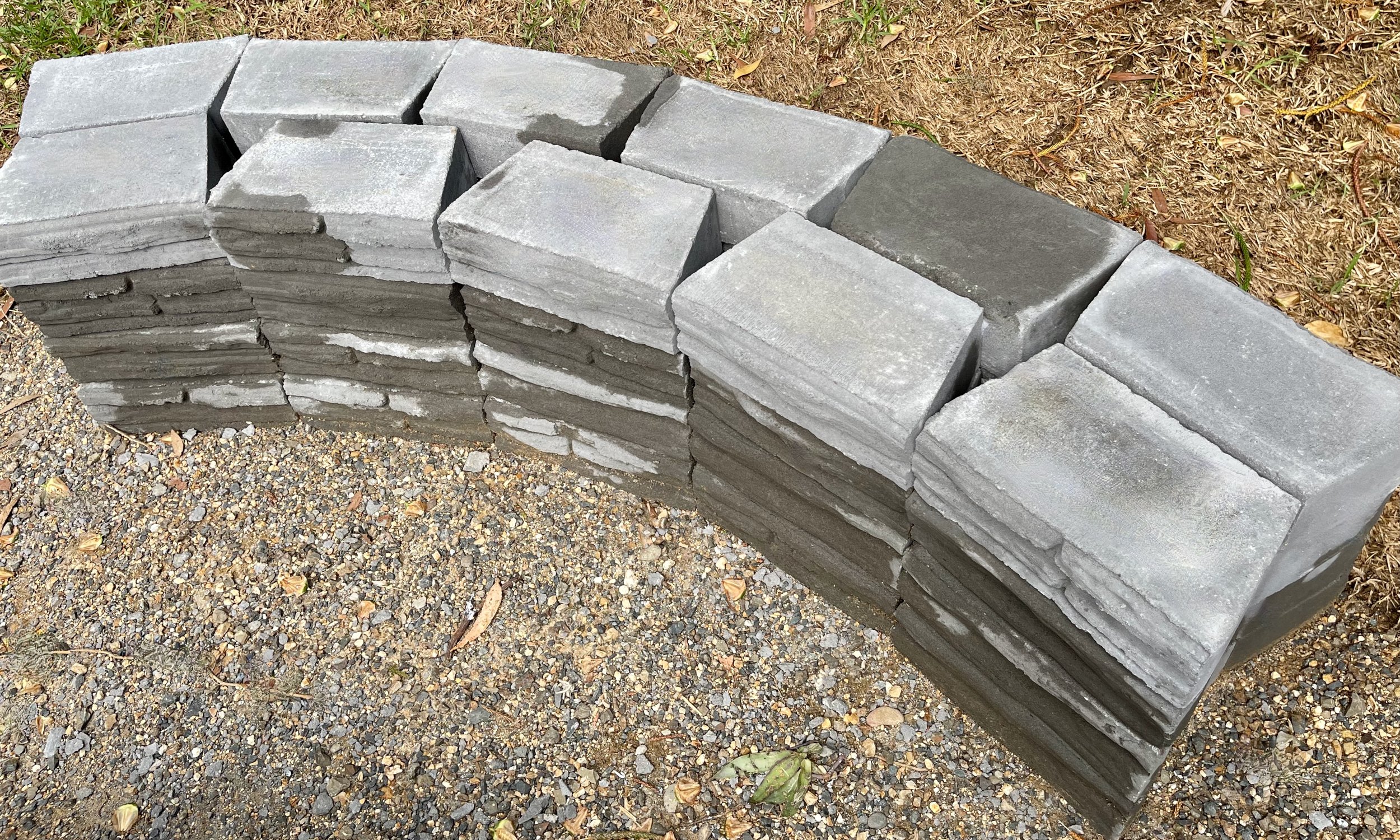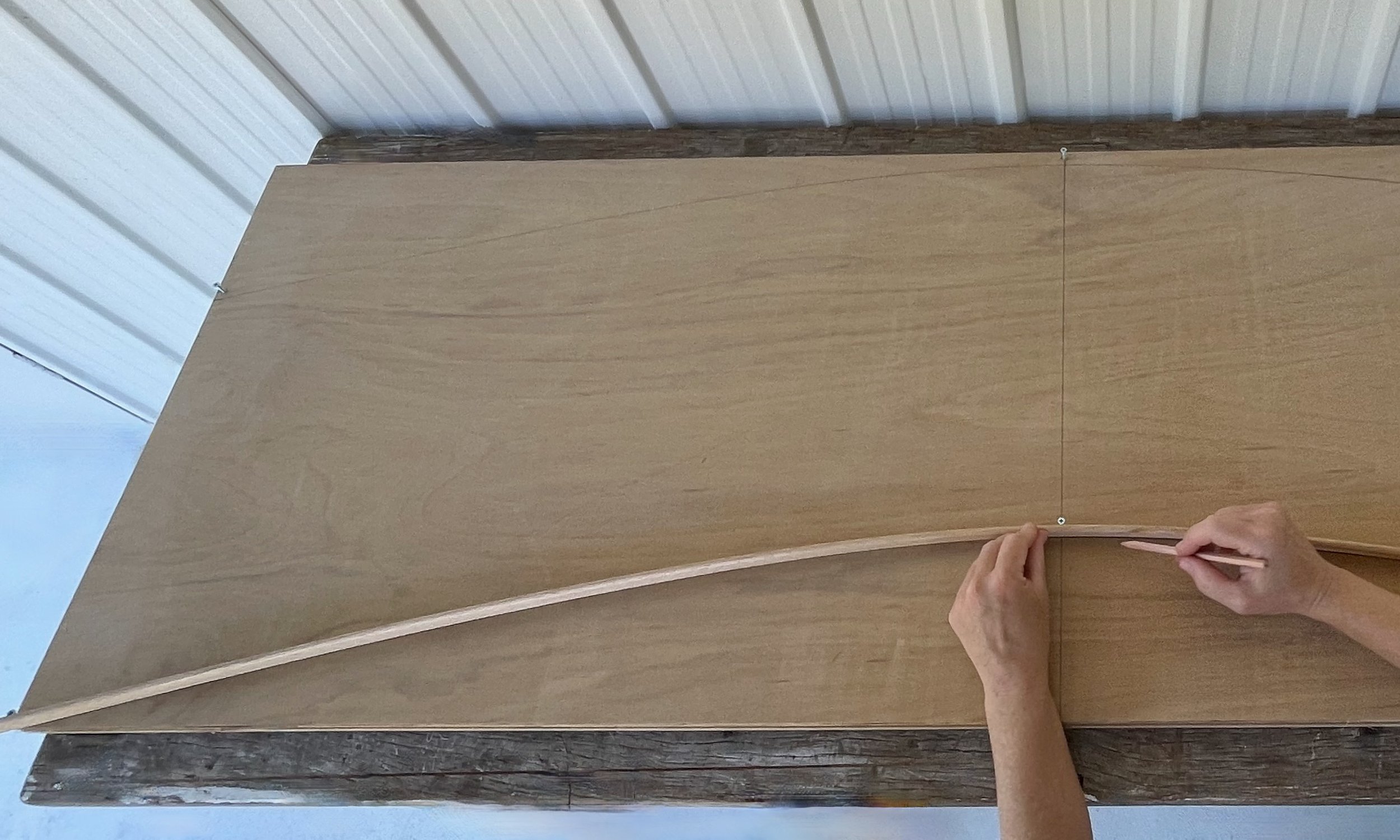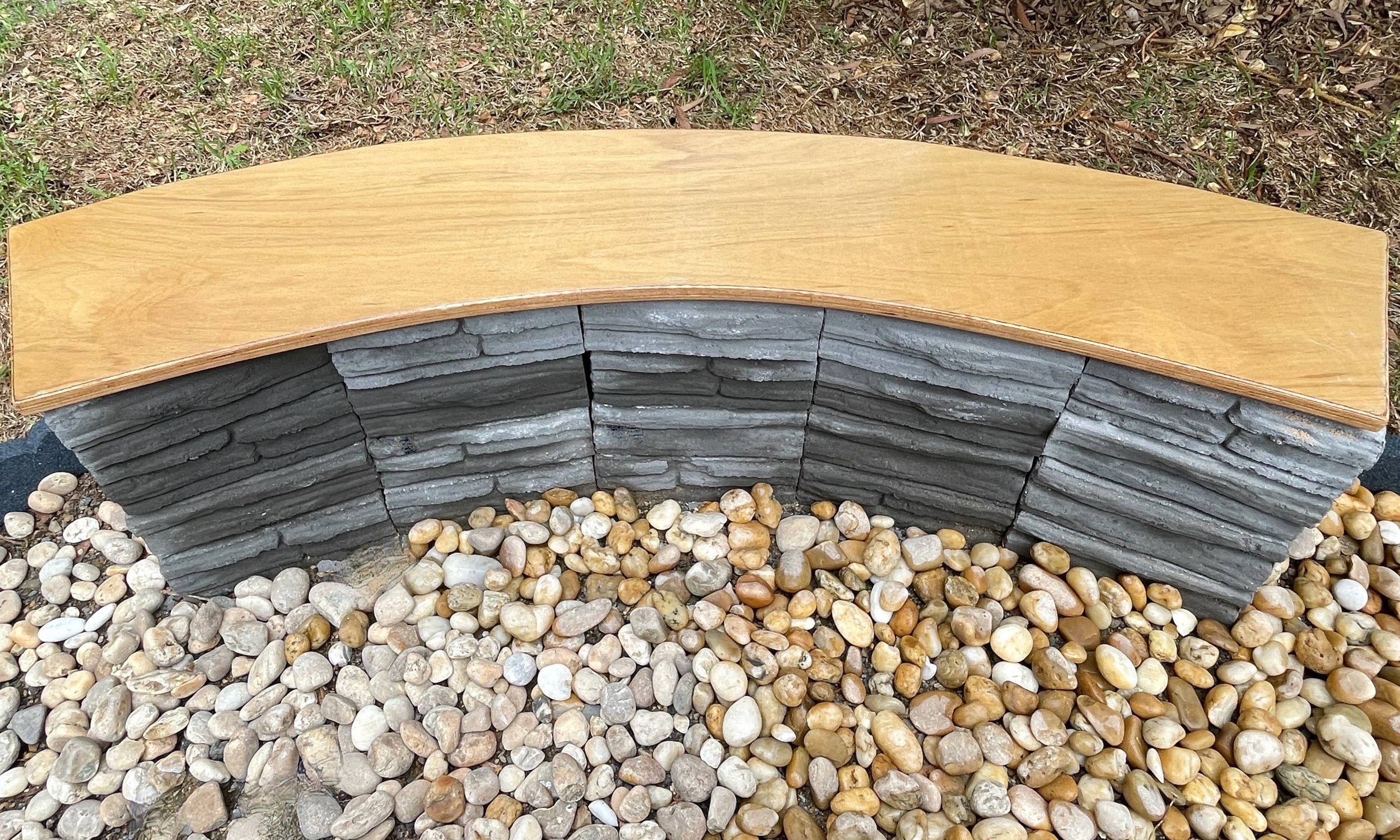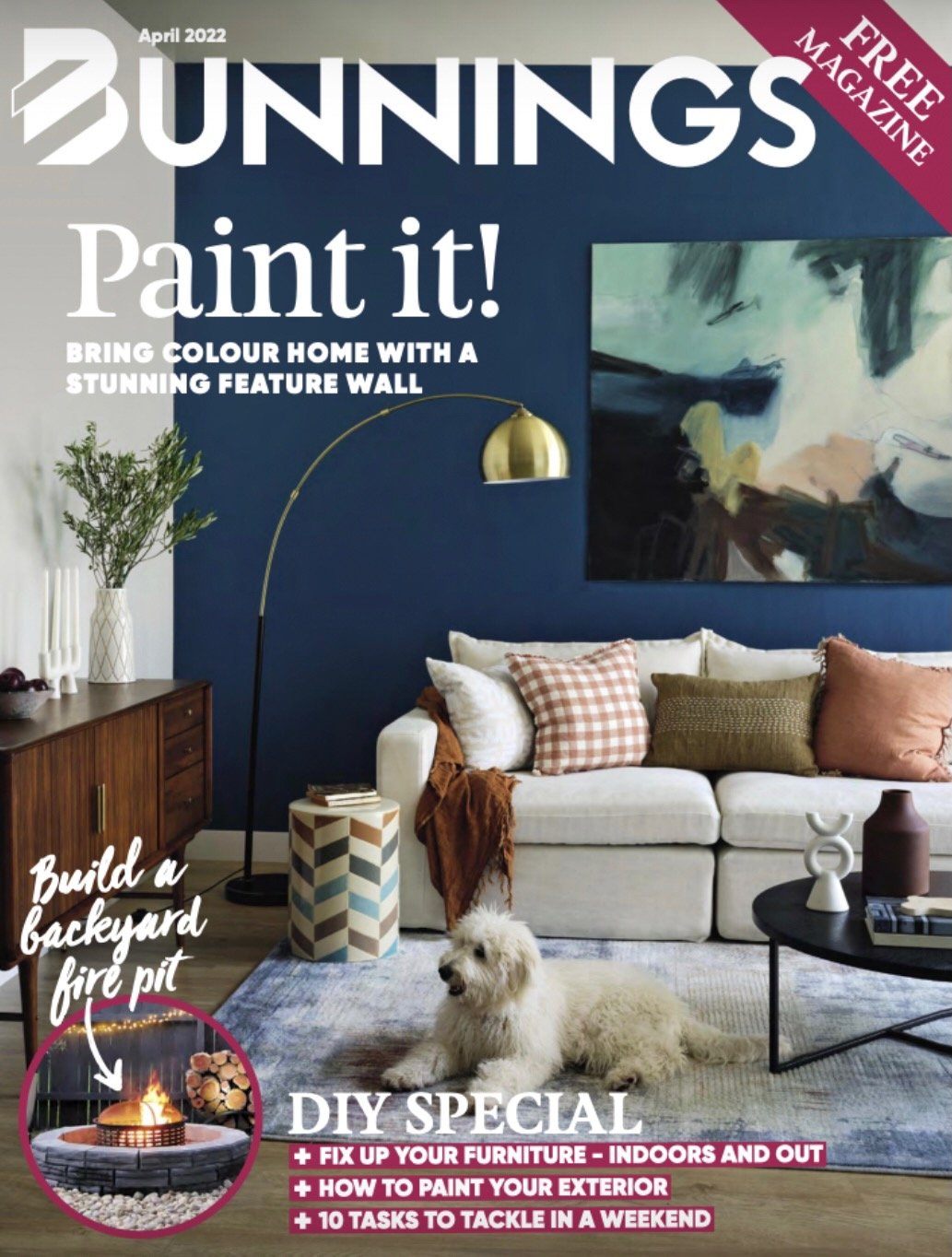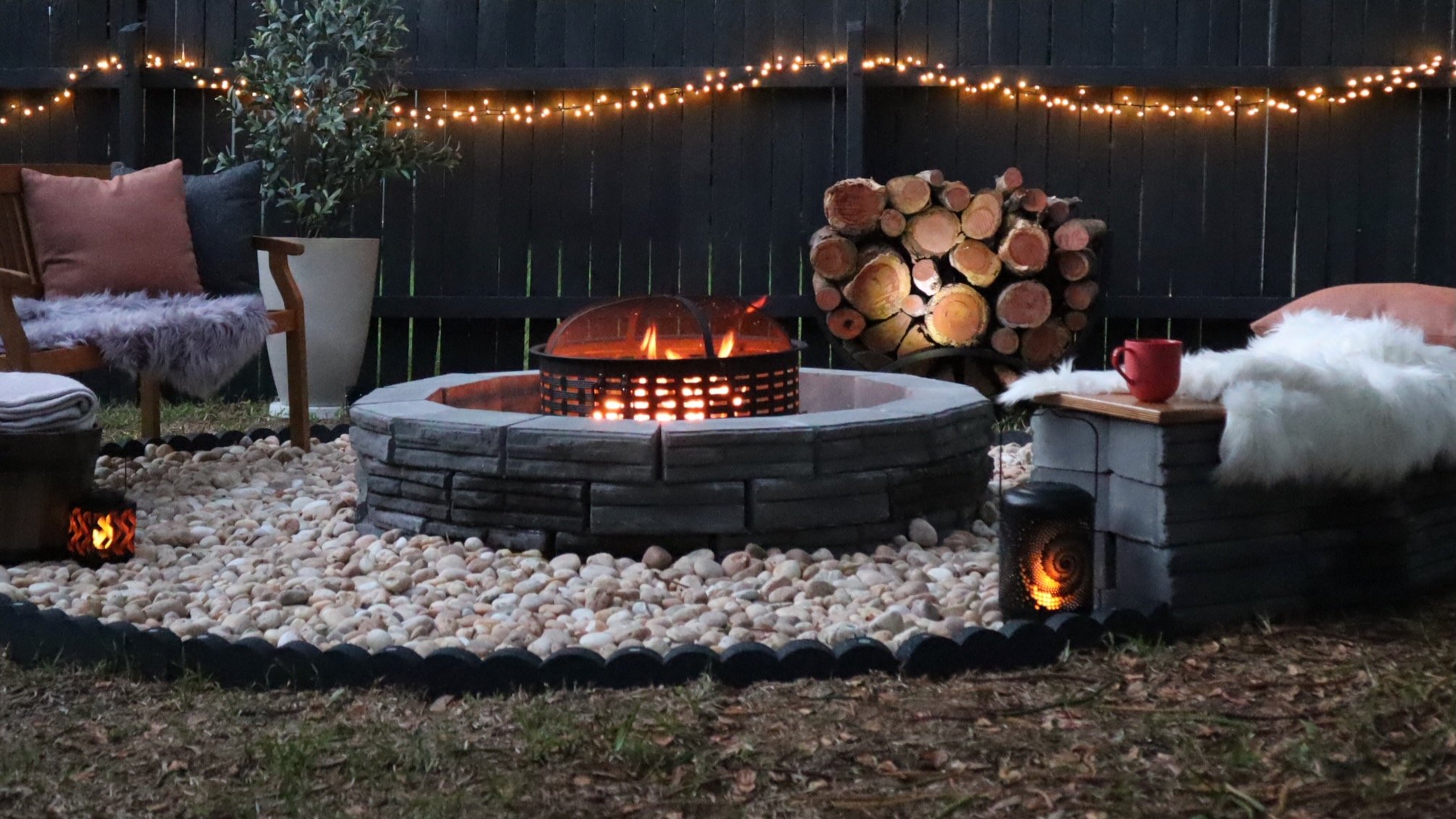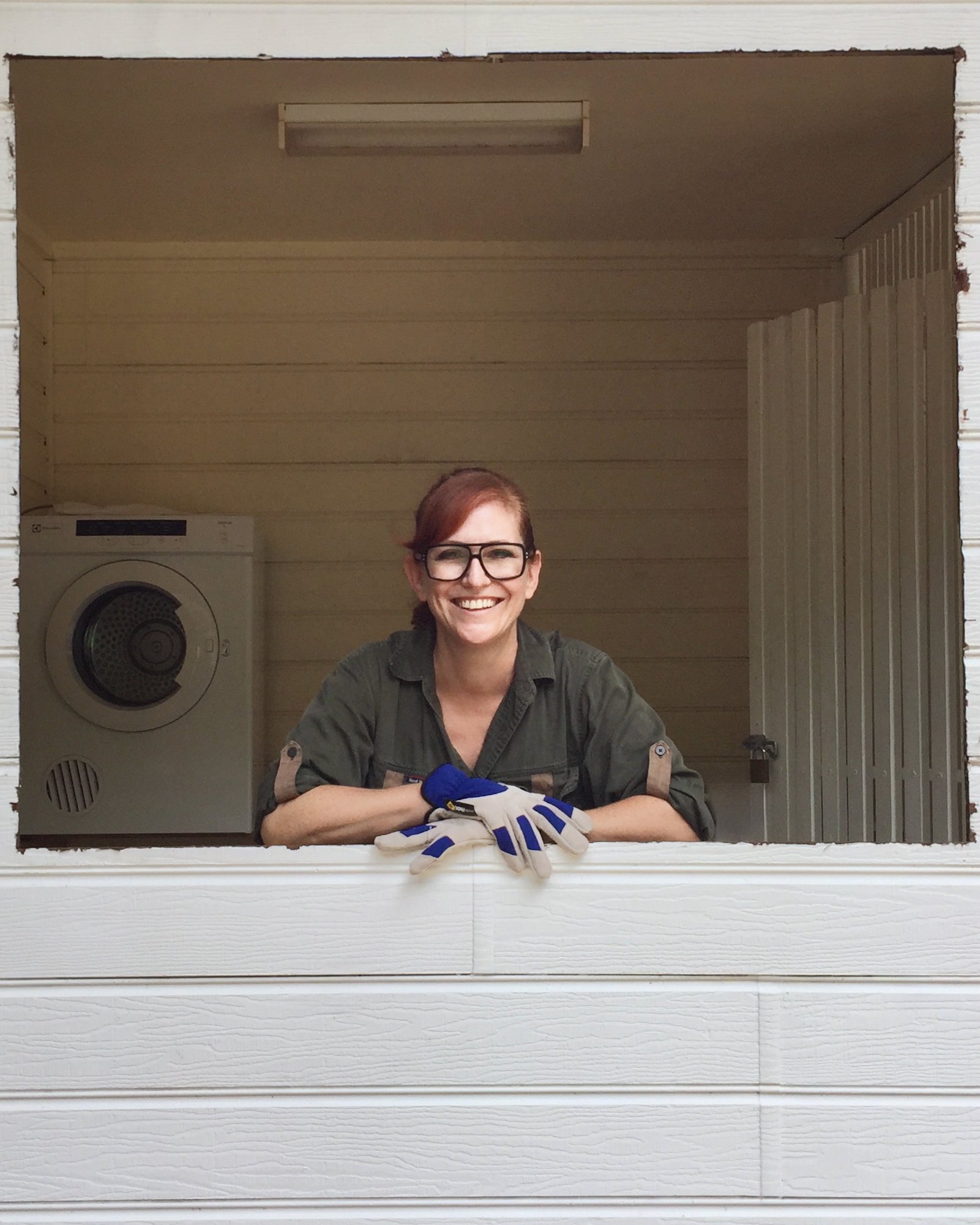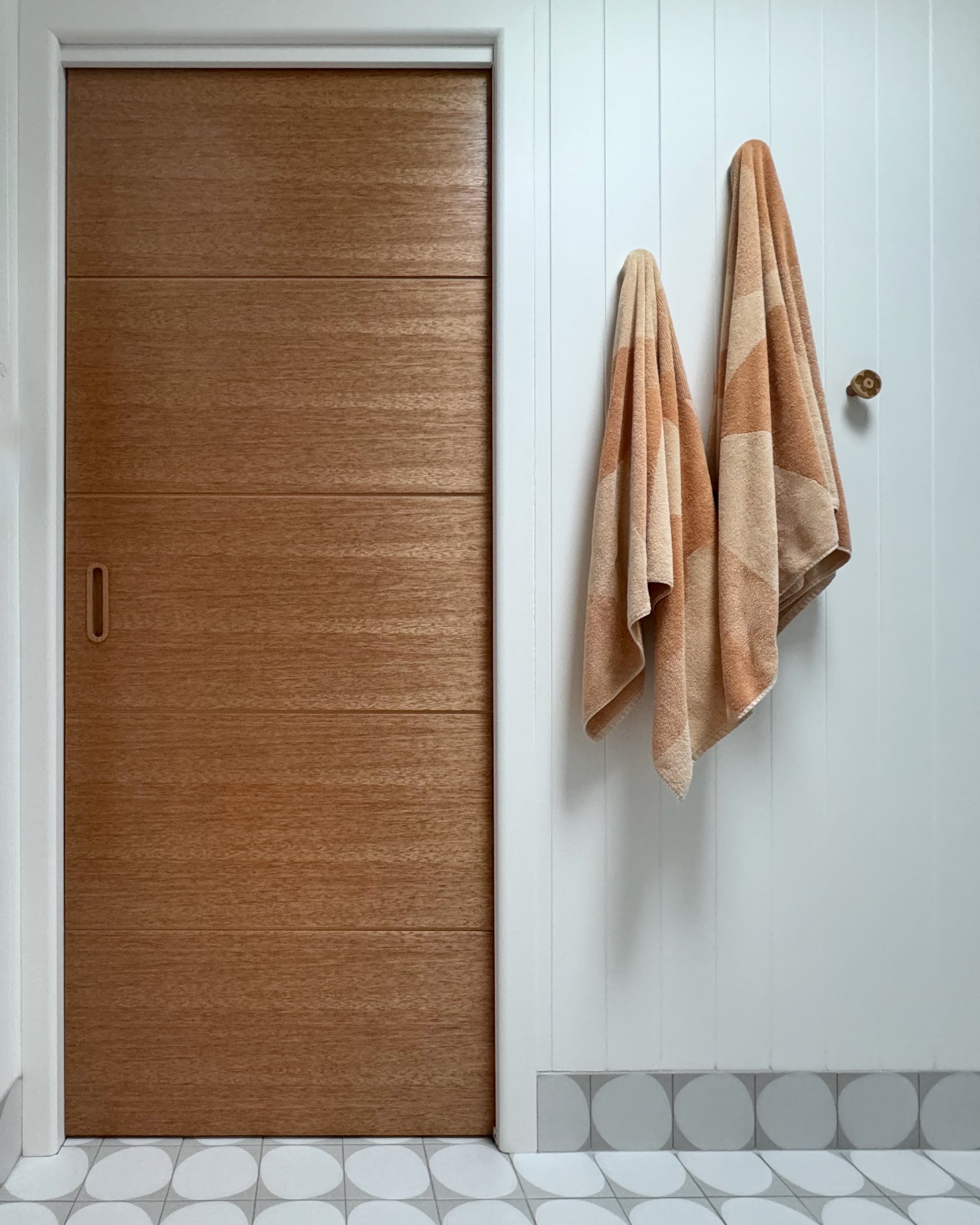Fire Pit with Built-in Seating
Alun Machin
When Bunnings Magazine asked if I’d like to show readers how to DIY a dedicated outdoor winter area with a fire pit and matching seating… my first reaction was, ‘How do I put a designer twist on a usually traditional-style space to make to look modern and inviting all year round?’
I decided to combine basic building materials for colour, texture and shape to design a zoned area, with the DIY completed in three stages.
ZONED AREA Clear the area, compact road base into a big circle, install edging and fill with large white stones.
SAFETY SURROUND Assemble a metal fire pit bowl and build a surround with bluestone retaining wall blocks in a simple design (no concrete required!).
CURVED SEATING Set out the same blocks to create a curved bench, adding a contrasting seat made from marine plywood.
Here’s how I did it…
The hardest part of the project was clearing an overgrown section of the big backyard, so I called in some help to demolish the jungle.
I marked out a 4m-wide circle to compact with road base, then had top soil and turf brought in to lay around it.
TIP The area is positioned away from the fence and overhanging trees. Purchase the fire pit bowl first and check that you can meet the safety requirements before getting started.
Natural Impressions blocks in Bluestone are designed to curve slightly and stack as inset rows of a retaining wall using a lip at the back to hold them in place. But I didn’t need them to perform this way and tapped off the lips with a Craftright 1.35kg Club Hammer so the blocks could sit flat and flush.
To make a fire pit safety surround, 14 blocks is the magic number for a circle with minimum gaps. I skipped using concrete in favour of landscaping adhesive applied with a battery-operated caulking gun and lay three courses in a stretcher bond pattern.
TIP Click through to more info on the tools, materials and instructions for building the fire pit surround.
Once the surround was built, I assembled a metal fire pit bowl with feet and simply dropped it in the centre.
TIP The inner diameter is 1080mm, which is more than enough for most off-the-shelf pits.
I used 44 blocks to build a two-seater bench, setting them out to match the curve of the road base circle, with six facing outwards and five facing inwards, using two 200mm x 100mm x 50mm pavers as spacers at the ends. For the second course, I set the back of the blocks 10mm in, over the spacers, then lay the third and fourth courses, applying adhesive between all joints.
TIP Build the base before finishing the rest of the zone so the edging can be installed around it.
For a comfortable seat, and to add contrast with timber, I cut a sheet of 9mm marine plywood in half lengthways and glued it together with Bondall’s Bondcrete woodworking adhesive to make a 1800mm x 605mm x 18mm-thick panel.
To cut the curved edges, I installed screws and left them protruding halfway at 10mm and 420mm up from the base, and the centre 10mm and 420mm down from the top. Then I pushed a length of 20mm x 4mm coverstrip moulding against the screws to trace the curves and cut with a jigsaw.
While test-fitting the seat on the bench I marked the corners on the underside of the panel to cut the ends with a jigsaw. (Using the actual bench as a template for shaping the ends will ensure the best fit.)
After rounding over the edges with a trimmer, I smoothed all over using a random orbital sander with 180-grit abrasive disc. Then I wiped away the dust and sealed both sides with three coats of marine-grade Monocel Gold Exterior in Clear using a mini mohair roller, ensuring the edges were well sealed for moisture protection.
To install the seat, I applied adhesive over the top of the blocks and dropped it into position, pushing down to hold it in place.
TIP It’s worth investing in marine-grade products for maximum weatherproofing of outdoor timber features.
To mark out the zone, I installed scalloped garden edging, made from flexible rubber that is simply bent to match the curve of the circle.
TIP Just tap in the nylon spikes with a soft mallet. It adds an on-trend feel that will look even better when the turf greens up.
Then I covered the area with large 30-50mm white pebbles. Can rocks be classy? Yes. These look so good! I used 45 bags for good coverage.
TIP Moving 15kg bags begins to feel like hard work! To minimise effort, drop them into position, slice the base of the bag with a knife and pull it upwards while spreading the stones as they drop out.
To finish, I spent $90 and two hours on sprucing up the background fence with a 10L tub of Walpamur Fence Finish in Charcoal. Discover my trick to making the job easier.
Bunnings Magazine loved this project so much it features on the cover! Find more details from page 68 in the April 2022 issue.
Cosy winter nights around a safely lit fire.
Are you planning to build an outdoor winter zone?
Tag me on your project and follow more of my DIY journey on Instagram for tool tips, home improvement and simple building projects.
